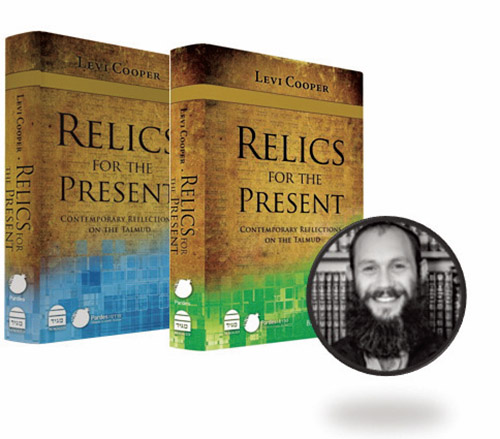
When I first started seriously learning Talmud a few years ago, I was still somewhat intimidated by the multi-tome text, which spelled out many of the roots of Jewish observance. In a language I hadn’t encountered since high school, in a cadence that was simultaneously familiar and unknowable, I wanted to penetrate the text, but I didn’t know how.
And then, for Chanukah, I received a book as a gift: “Relics for the Present, Vol I,” by well-known teacher and community leader Rabbi Dr. Levi Cooper. The book offered a page-by-page compendium to the study of the Talmudic tractate of Berachot, intended to take the meaning of the text and make it relevant for our everyday lives. My Hevruta and I dove in, and even when “Relics” ended halfway through the tractate, we continued studying. “Relics” infused us with a love of Talmud that carries us both to this day.
But thankfully, Rabbi Cooper wasn’t done. Just last year, his commentary on Berachot was completed. “Relics for the Present, Volume II” is a masterpiece, a beautiful work capable of inspiring the unengaged or reigniting passions long dormant.
For many Jews who weren’t reared on Talmudic discourse, the denseness of the Aramaic pages can be intimidating. And for many Jews raised in an Orthodox atmosphere, the back and forth of Talmudic arguments can feel meaningless. Rabbi Cooper manages to bridge the gap between these two worlds, making the Talmud simultaneously accessible and meaningful. He brings the ancient text to life, making it relevant and necessary in an increasingly distant age.
For example, on Berachot 35b, when Hazal discuss whether a person should ever cease from studying Torah, Rabbi Cooper brings the conversation around to modern problems facing the state of Israel, using commentators and texts to show that both Torah and work are necessities for a society to function. And given the reactions of many to the recent Presidential elections, the questions raised by Rabbi Cooper in response to Berachot 58a, the proper blessing to say for a gentile King, are ever more relevant.
Rabbi Cooper also manages to infuse the Talmud with a spiritual element rarely seen in most Yeshivot. Birkat HaMazon is no mere post-gluttony rote ritual. It is a spiritual trope meant to instill in us, and, more importantly, in our children, the importance of saying “Thank you.” Through the words of Rabbi Yakov Emden, Rabbi Cooper makes the act of study itself a front in the war against our own evil inclinations; through our ties with our traditions, we root ourselves in the good.
Rabbi Cooper is travelling through time as he engages Hassidic Rabbis in conversation with Talmudic ones, imagining what Rashi and the Mishneh Berurah might have said sitting at the table with Rav and Shmuel. He takes us “inside,” as it were, giving a peek into the living, breathing process that is Rabbinic discourse.
Whether you are a first-time learner or a Yeshiva star, whether you are in the midst of the Daf Yomi cycle or just opening the first page of Berachot, “Relics of the Present, Vol II” is a must-have for any Jewish library. Prepare to be inspired, prepare to be wowed and prepare to understand that these ancient pages belong to you.
By Jeremy Borovitz
Jeremy Borovitz is currently a second year rabbinical student at Yeshivat Chovevei Torah in New York, after studying for two years at the Pardes Institute for Jewish studies. Jeremy previously served as a US Peace Corps Volunteer, and worked internationally for the JDC and Moishe House.









